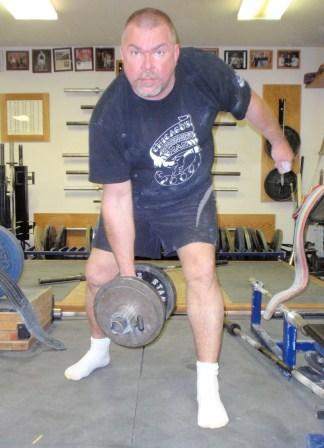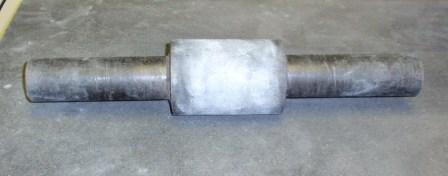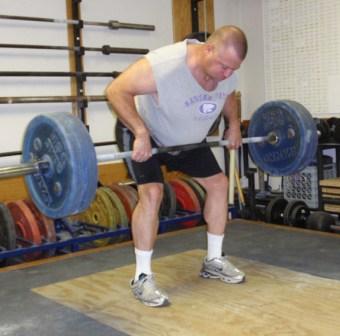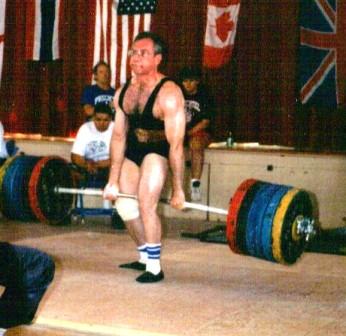Curl – Reverse Grip
by Al Myers
One of the lifts that will be contested at Nationals this month, as well as at the IAWA World Championships in October, will be the Reverse Grip Curl. However, I want to point out that at each of these meets this lift will be done in a completely different fashion!! The reason for this is that the USAWA rules for the Reverse Grip Curl are completely different than the IAWA rules! This makes this lift “one of many” all round lifts in which for some reason the rules have been written differently for the USAWA than the IAWA – thus causing problems when one of these lifts is selected for an IAWA competition because USAWA lifters have been doing it differently. Add in the issue that it completely makes World record keeping for these lifts impossible!!!
USAWA RULE
D8. Curl – Reverse Grip
The rules of the Curl – Cheat apply with this exception. The grip on the bar must be a reverse grip, with the palms of the hands facing down or towards the lifter.
D7. Curl – Cheat
The bar begins on the platform, and at the lifter’s discretion, is picked up with a grip that has the palms of the hands facing up or away from the lifter. Feet placement and hand spacing is optional, but must remain the same throughout the lift. The heels may rise during the lift. Once the lifter is upright in a standing position with the arms and legs straight, the bar on the thighs hanging at arms’ length, an official will give a command to curl. The knees must remain locked and the legs straight during the lift. The lifter is permitted to bend at the waist, sway the body, or drop the shoulders to gain momentum of the bar. The bar may be lowered prior to the beginning of the curl, including lowering the bar below the knees. The bar must be curled from arms’ length to touching the upper chest or neck in one motion. Any downward movement of the bar during the curl is a disqualification. Once the bar is motionless, and the lifter is upright, an official will give a command to lower the bar. The lift ends when the bar returns to the platform under control by the lifter.
IAWA(UK) RULE
E32 REVERSE CURL
The rules of performance for the rectangular fix apply, except that once the curled bar reaches the midway point, it does not stop fixed, but continues in one movement, until the bar is at the top of the sternum / neck configuration.
E3 RECTANGULAR FIX
The barbell should be held at arms length, resting across the lifters thighs with the legs and body upright and erect. With a hand grip spacing of no more than shoulder width, and with the knuckles facing the front, the referee will signal to start the lift. With the upper arms remaining held in contact with the torso, the lower forearms will raise, holding the bar firm (not sagging at the wrist) until they are at right angles to the body and parallel to the floor. No raising of the heels and toes, or swaying of the body is allowed. When the bar is held fixed and motionless in the finished position, the referee will signal to replace the bar.
Causes for Failure:
1. Starting the lift prior to the referees signal.
2. Failure to hold the bar in the fixed, finished position, forearms at right angles to the body and parallel to the floor, until the referees completion signal.
3. Any movement of the feet or swaying of the body during the lift.
4. Failing to keep the legs and torso braced, upright and erect during the lift.
5. Failure to keep the upper arms in contact with the torso throughout, or allowing wrists to sag.
As you can see from reading these two rule descriptions for the Reverse Grip Curl (or Curl – Reverse Grip if you are using USAWA lingo, or Reverse Curl if you are using the IAWA-UK name), this is obviously two completely different lifts! The USAWA version follows the rules of the Cheat Curl while the IAWA(UK) version follows the rules of the Rectangular Fix. The ONLY THING that is in common is that a reverse grip must be used. Other than that, the USAWA version is as different as “night and day” from the IAWA(UK) version. I wouldn’t even consider this the same lift.
I’m writing this blog today so hopefully any lifter planning on competing at Nationals will know that the USAWA Rule will be followed there, as well as any lifter planning on competing at Worlds will know that the IAWA rule will be followed at that meet. I have been to enough IAWA meets in the past where I was “surprised” by rule differences that I was not aware of previously, and I don’t want anyone else to be in this situation with the Reverse Grip Curl at either of these meets!



